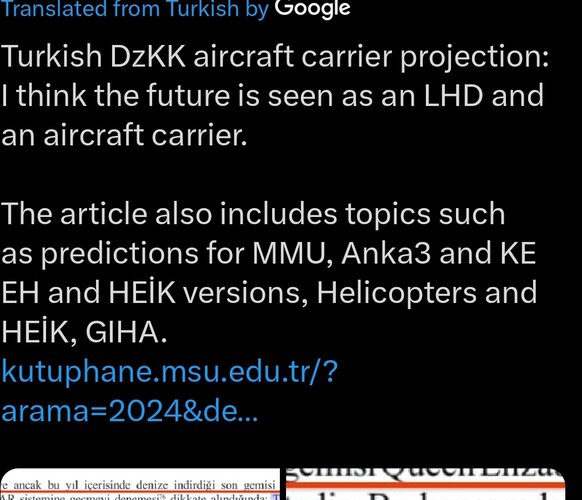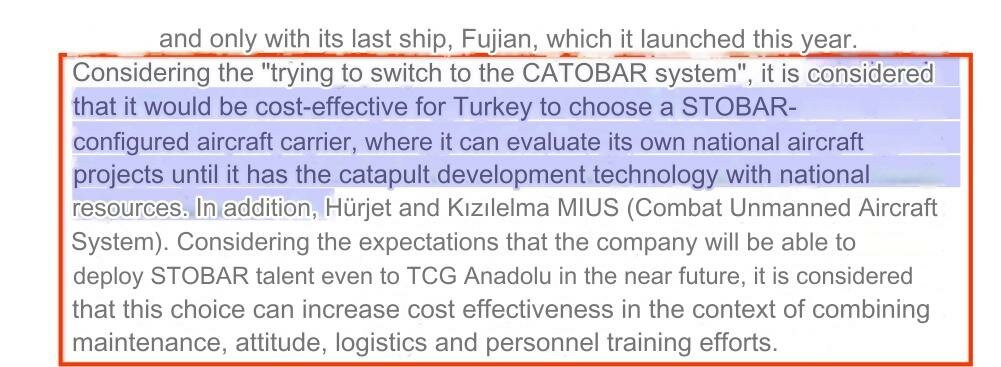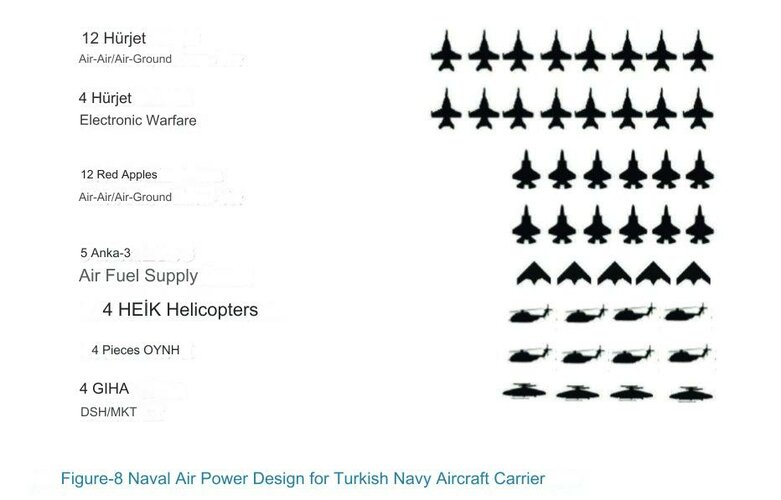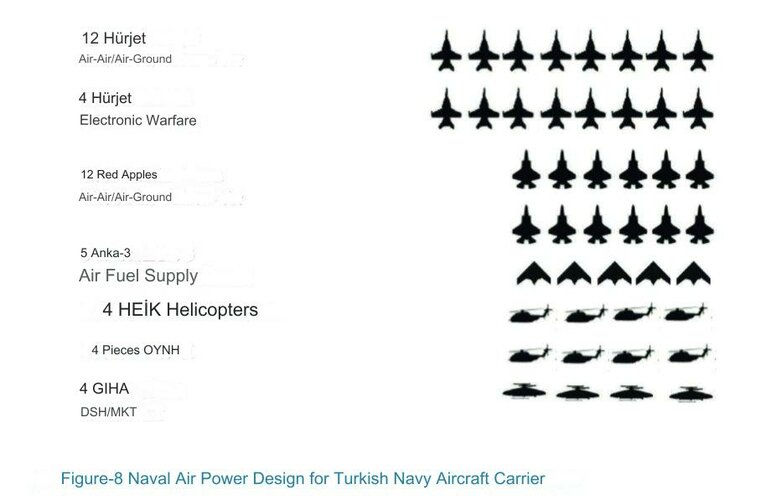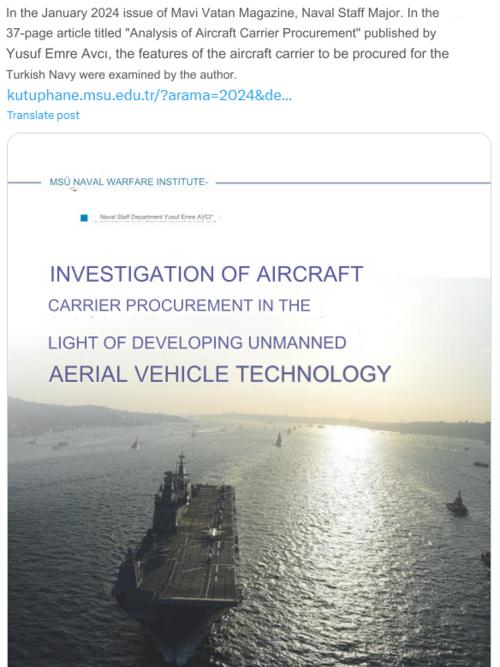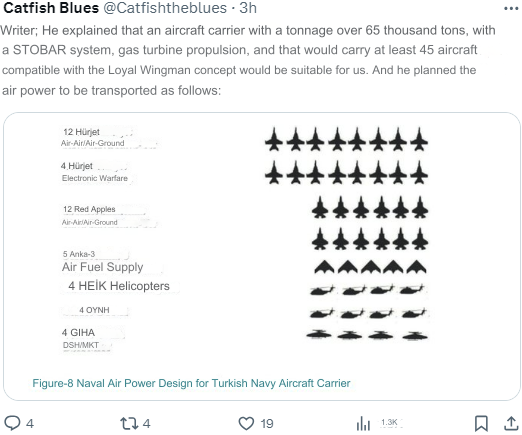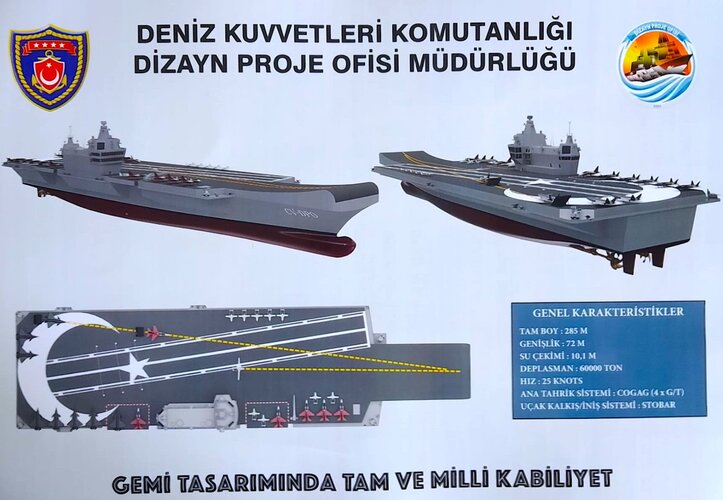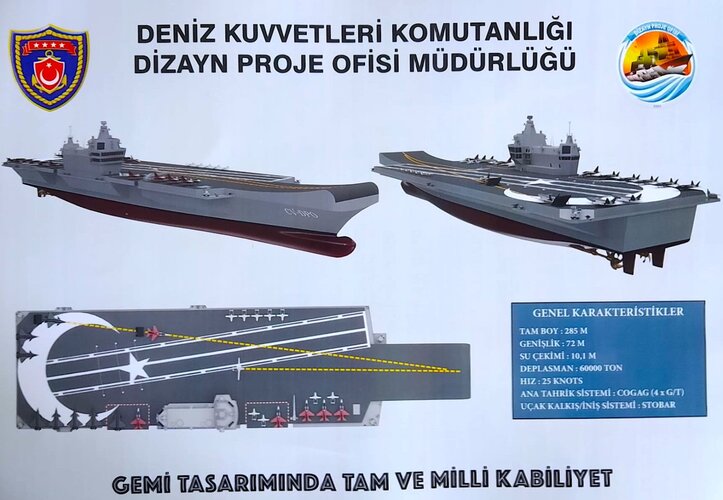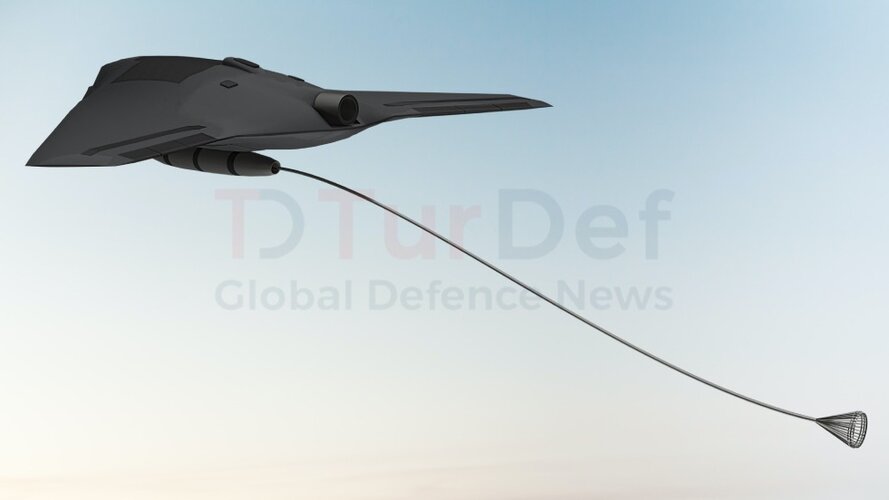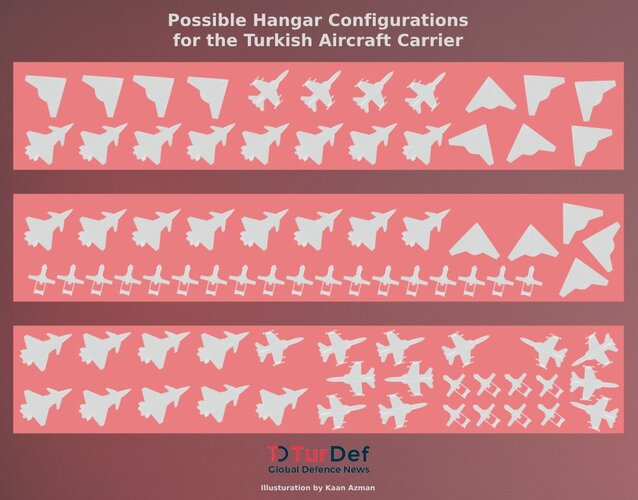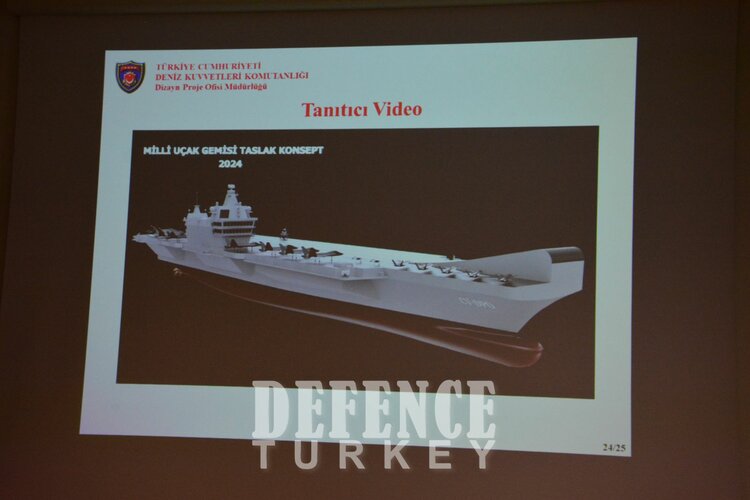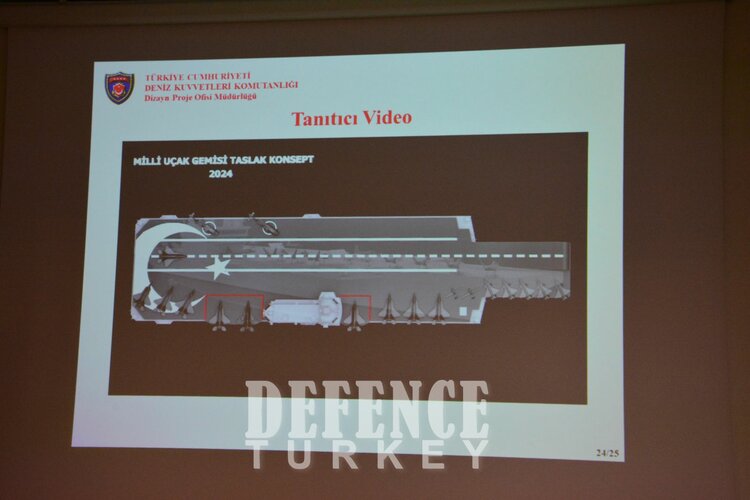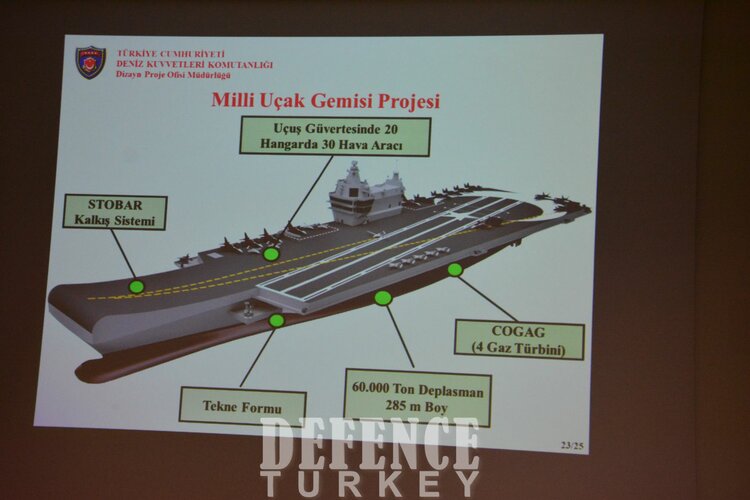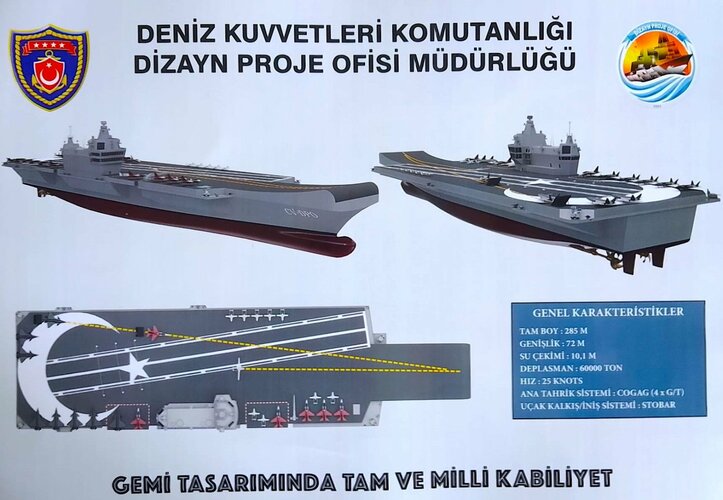snne
ACCESS: Top Secret
- Joined
- 3 July 2022
- Messages
- 1,385
- Reaction score
- 4,490
The first pic and specs of the Turkish aircraft carrier concept have been revealed:

Ministry of National Defense: “With the decision taken upon the directive of our President Recep Tayyip Erdoğan to have a Domestic and National Aircraft Carrier, design activities were started by the Design Project Office of our Naval Forces Command.
In this context; In order to examine the National Aircraft carrier design on site, which was initiated by the Design Project Office Directorate and a significant progress was made on the concept design, on February 15, 2024, accompanied by the Commander of the Naval Forces, Admiral Ercüment Tatlıoğlu; President of Defense Industries Prof.Dr. Haluk Görgün, Rector of National Defense University Prof.Dr. Erhan Afyoncu, ASELSAN General Manager Ahmet Akyol, HAVELSAN General Manager Dr. Design Project Office Directorate was visited by Mehmet Akif Nacar, ROKETSAN General Manager Murat İkin and BAYKAR Technology Chairman of the Board Selçuk Bayraktar.
"During the visit, the National Aircraft carrier design activities, which were implemented with the high engineering-based superior design talent of the Design Project Office Directorate and the warship design tradition and experience crowned by our engineers with the design and manufacturing of the latest TCG Istanbul Frigate, were examined on-site."
From another source:
Design of the Turkish Aircraft Carrier Unveiled
Turkish MoD has shared a rendered image of the future aircraft carrier's design on social media with some technical specifications.
The future ship, as expected, is significantly larger than TCG ANADOLU LHD at 285 m length and 60000 tonnes displacement. The officials have stated that the new ship will be larger to accommodate more aircraft.
What aircraft type will be used hasn't been disclosed, but a few KAAN fighter jets can be observed on the deck. This indicates that there are plans for a naval variant of Turkiye's first fighter jet. Other aircraft such as UAVs (Bayraktar TB3, KIZIELMA...) and helicopters can be expected.
It is stated that the operation type of aircraft will be Short Takeoff But Arrested Landing (STOBAR), used on Russian, Indian and early Chinese aircraft carriers. Instead of the catapult-assisted takeoff, this method is simpler and cheaper as a partially up-curved runway is used instead of a catapult. The landing is done by arresting gear and catching the aircraft with a hook using wires. TCG ANADOLU to operate Bayraktar TB3 UCAVs will adopt a similar principle.
A Combined Gas Turbine and Gas Turbine (COGAG) propulsion system will be used to provide a speed of 25 knots. Another case of Turkiye's use of COGAG propulsion on a large-sized warship is the DİMDEG logistic support ships. The design goal can explain why all-turbine propulsion must have the large-sized ships keep up with their escorts.
Overall, the design is closer to the likes of the British Queen Elizabeth class with its displacement between LHDs and full-sized nuclear-powered carriers like the U.S.'s Nimitz class. It can be regarded as a more achievable and sustainable goal with more manageable development and operation conditions compared to a nuclear-powered CATOBAR carrier of 300+ m in length.
The design was unveiled during the visit of Naval Forces Commander Admiral Ercüment Tatlıoğlu’s visit along with President of Defense Industry Agency Professor Haluk Görgün, Rector of National Defence University Professor Erhan Afyoncu, ASELSAN General Manager Ahmet Akyol, HAVELSAN General Manager Dr Mehmet Akif Nacar, ROKETSAN General Manager Murat Ikinci and BAYKAR Technology Chairman Selçuk Bayraktar to the Design Project Office Directorate.
https://www.turdef.com/article/design-of-the-turkish-aircraft-carrier-unveiled
Last edited:




